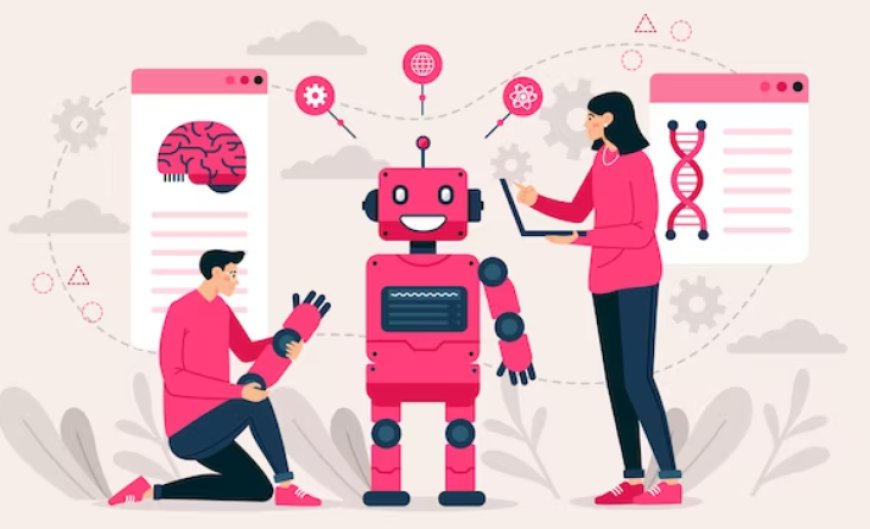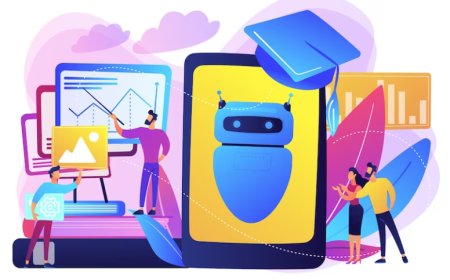Deep learning vs. Machine learning
Explore the key differences and similarities between Deep Learning vs. Machine Learning. Understand when to leverage these powerful AI technologies for your specific applications

Machine Learning (ML) and Deep Learning (DL) are two pivotal branches of artificial intelligence (AI) that have gained immense significance in today's technology landscape. ML, a broader discipline, involves teaching computers to learn and make predictions from data, while DL, a subset of ML, specifically focuses on using artificial neural networks to model and solve complex problems. These fields have become indispensable in various industries, driving innovations in natural language processing, computer vision, autonomous systems, and data analytics, revolutionizing the way we interact with and leverage data in the modern world.
Foundations of Machine Learning
Machine Learning is a computational approach that involves the utilization of algorithms and statistical models to enable computer systems to improve their performance on a specific task through experience, without being explicitly programmed. It encompasses various learning paradigms such as Supervised Learning, where models are trained on labeled data; Unsupervised Learning, where models identify patterns and structures in unlabeled data; and Reinforcement Learning, which focuses on learning optimal actions in a given environment.
Additionally, Machine Learning often entails the crucial steps of feature engineering and data preprocessing to extract relevant information from raw data, and it employs a range of common algorithms, including linear regression for regression tasks and decision trees for classification problems, among others, to make predictions and decisions based on learned patterns.
Deep Learning Fundamentals
Deep Learning is a subset of machine learning characterized by its utilization of Artificial Neural Networks (ANNs) as the fundamental architecture. These networks consist of layers of interconnected nodes (neurons) that employ activation functions to process and transform data. Deep learning's core principle lies in its ability to automatically learn and extract intricate features from large datasets, a process enabled by the backpropagation algorithm, which refines neural network weights through iterative training, making it exceptionally well suited for complex tasks like image recognition and natural language processing.
Data Requirements
In the realm of machine learning (ML) and deep learning (DL), the nature of data plays a crucial role. Both ML and DL are sensitive to data volume and quality, with DL often thriving on large datasets, particularly in tasks involving image and text data. DL excels in handling unstructured data like images and natural language, where it can automatically extract complex patterns and features. On the other hand, ML, particularly in supervised settings, frequently deals with structured data, making use of well defined features and attributes to make predictions or classifications. Understanding the nature of the data is fundamental in choosing the right approach, whether ML or DL, for a given problem.
Model Complexity
Shallow vs. Deep Models
-
Shallow models in machine learning typically have a limited number of layers or complexity.
-
Deep models in deep learning are characterized by having multiple hidden layers, allowing them to learn intricate patterns and representations.
Representation Learning in DL
-
Deep learning focuses on representation learning, where the model learns to automatically extract and hierarchically represent features from raw data.
-
Representation learning enables DL models to discover complex, abstract features that may not be obvious through manual feature engineering.
Feature Extraction vs. Feature Learning
-
In traditional machine learning, feature extraction involves manually selecting and engineering relevant features from the input data.
-
Deep learning, on the other hand, involves feature learning, where the model automatically learns features from the data, reducing the need for extensive feature engineering.
Training and Optimization
In both Machine Learning (ML) and Deep Learning (DL), the process of training models involves the optimization of certain parameters to minimize error or loss. Gradient Descent is a fundamental optimization algorithm used in both paradigms. However, one notable distinction lies in the optimization techniques.
Deep Learning employs specialized optimizers such as Adam and RMSprop, which are designed to handle the complexity of deep neural networks efficiently. Additionally, hyperparameter tuning, the process of finding the optimal settings for various model parameters, is a critical aspect in both ML and DL. While the principles are similar, the scale and complexity of hyperparameter tuning can be significantly more demanding in Deep Learning due to the multitude of parameters in deep neural networks.
Application Areas
Both Machine Learning (ML) and Deep Learning (DL) find applications across a range of domains. In the realm of Machine Learning, we commonly encounter its algorithms in tasks such as regression, where it predicts numerical values, classification, which categorizes data into predefined classes, and clustering, which groups similar data points together.
On the other hand, Deep Learning excels in handling complex unstructured data. It plays a pivotal role in computer vision, enabling machines to interpret and understand images or videos, natural language processing, where it powers language understanding and generation, and speech recognition, facilitating voice commands and transcription. These distinctive application areas showcase the versatility of both ML and DL in addressing various datarelated challenges.
Data Efficiency
In the realm of machine learning (ML) and deep learning (DL), a fundamental distinction lies in their approach to feature handling. Traditional ML often relies heavily on meticulous feature engineering, where human experts manually design and select relevant features from the data. This process demands domain knowledge and can be time consuming.
Conversely, DL exhibits a remarkable capability to autonomously learn intricate features directly from raw data. Through artificial neural networks (ANNs) and layered architectures, DL models automatically identify and extract meaningful patterns and representations, minimizing the need for explicit feature engineering.
Furthermore, DL introduces the concept of transfer learning and pretrained models. Transfer learning allows DL models to leverage knowledge gained from one task and apply it to another, accelerating training and improving performance. Pretrained models, fine tuned for specific tasks, are readily available in DL, facilitating the development of sophisticated applications with less data and computational resources.
The contrast between ML's reliance on feature engineering and DL's capacity to autonomously discover features, coupled with the advantages of transfer learning and pretrained models in DL, underscores the transformative nature of deep learning in data driven applications.
Hardware and Computational Requirements
In the context of hardware, it's important to note that Deep Learning (DL) often relies on specialized hardware, such as Graphics Processing Units (GPUs), to accelerate its computational tasks. GPUs are highly efficient in handling the complex calculations required for training deep neural networks. This hardware acceleration significantly boosts DL's performance and training speed.
On the other hand, Machine Learning (ML) models, particularly those with simpler algorithms and smaller datasets, can often be executed feasibly on standard hardware configurations. This is one of the advantages of ML, as it doesn't necessarily demand specialized hardware infrastructure, making it more accessible for a wider range of applications.
Interpretability and Explainability
Interpreting machine learning (ML) model decisions can be a complex endeavor. While ML models can provide accurate predictions, understanding why a model made a particular decision can be challenging. Interpretability techniques, such as feature importance scores and model specific interpretability tools, are commonly used to gain insights into an ML model's decision making process.
Explaining deep learning (DL) models poses its own set of challenges. DL models, particularly deep neural networks, are often referred to as "black boxes" due to their complex, multilayered architectures. This opacity makes it difficult to decipher how these models arrive at specific predictions. Despite these challenges, researchers and practitioners are actively working on developing methods to improve the interpretability of DL models, such as layerwise relevance propagation and saliency maps.
In both cases, the goal is to make model decisions more transparent and understandable, facilitating trust in the predictions they generate.
Scalability
Handling Large Datasets in DL:
Deep Learning (DL) excels when it comes to handling large datasets. Its architecture, particularly Convolutional Neural Networks (CNNs) and Recurrent Neural Networks (RNNs), is well suited for tasks involving vast amounts of data, such as image recognition and natural language processing. DL models can automatically learn intricate patterns from these extensive datasets, obviating the need for manual feature engineering, which is often required in traditional Machine Learning (ML) methods. However, this advantage also necessitates substantial computational power and memory, typically relying on GPUs or even TPUs, which might not be as critical in many ML applications.
Distributed Training in DL vs. ML:
In the context of training deep neural networks, distributed training becomes crucial due to the immense computational demands. DL models, particularly those with many layers and parameters (e.g., deep CNNs or Transformer models), benefit significantly from parallel processing across multiple GPUs or distributed computing clusters. This approach accelerates the training process, allowing DL models to converge faster. In contrast, traditional ML algorithms often don't require distributed training to the same extent since they rely on different mathematical foundations and are less dependent on massive parallelization for performance gains. This distinction highlights the specialized infrastructure and computational requirements of DL when compared to ML.
Pros and Cons
Advantages of Machine Learning (ML):
-
Requires less data for training compared to DL.
-
Generally faster to train and deploy.
-
Well Suited for smaller datasets and simpler problems.
-
Interpretability and explainability are often better.
Disadvantages of Machine Learning (ML):
-
Requires manual feature engineering, which can be time consuming and error prone.
-
Limited ability to automatically learn complex features from raw data.
-
May not perform well on extremely large datasets.
Advantages of Deep Learning (DL):
-
Excels at automatically learning intricate patterns and features from raw data.
-
Stateoftheart performance in computer vision, natural language processing, and speech recognition.
-
Handles high dimensional data effectively.
-
Reduces the need for manual feature engineering.
Disadvantages of Deep Learning (DL):
-
Requires vast amounts of labeled data for training, which can be difficult to obtain.
-
Extremely computationally intensive, often necessitating GPUs or specialized hardware.
-
Prone to overfitting, especially with limited data.
-
Lack of interpretability and explainability for complex models.
Future Trends
Emerging trends in the fields of Machine Learning (ML) and Deep Learning (DL) are continually reshaping the landscape of artificial intelligence. One notable trend is the integration of ML and DL techniques, which holds the potential to unlock new levels of innovation.
Emerging Trends in ML and DL:
In the ever-evolving domains of ML and DL, several exciting trends are emerging. One of the most prominent trends is the increasing convergence of machine learning and deep learning methodologies. As AI research advances, we see a growing recognition of the strengths and weaknesses of both paradigms. Researchers and practitioners are exploring ways to combine the interpretability and data efficiency of traditional ML with the representational power of deep learning. This hybrid approach aims to achieve superior performance on complex tasks while maintaining transparency and explainability.
Integration of ML and DL Techniques:
The integration of ML and DL techniques is a significant step forward in the AI field. It involves leveraging the strengths of both approaches to create more robust and versatile models. For instance, pre-trained deep learning models can be fine-tuned for specific tasks using ML techniques, resulting in faster convergence and improved performance. Additionally, ML can aid in feature selection and engineering, enhancing the interpretability of DL models.
When choosing between ML and DL for a specific use case, consider the nature and volume of your data. If you have structured data or limited resources, ML may be a more practical choice. On the other hand, if you're dealing with large volumes of unstructured data and have access to the necessary computational resources, DL might offer superior performance. The decision ultimately hinges on the specific requirements and constraints of your project.




































